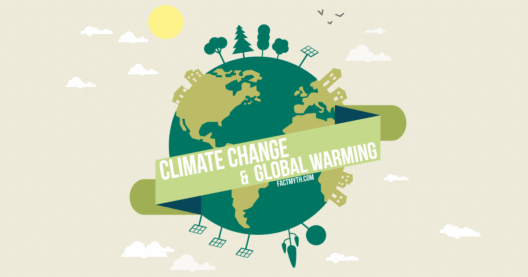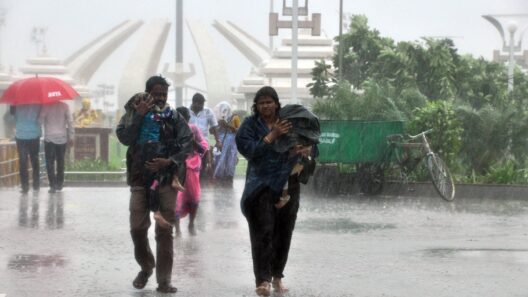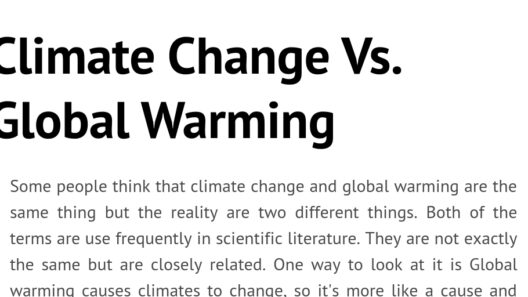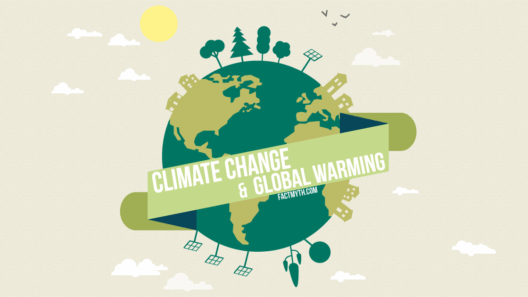The discourse surrounding climate change is fraught with complex statistics and often fraught emotions. At its heart, however, lies a critical query: how much death can be attributed to climate change? This question prompts rigorous examination, revealing dire implications not only for human health but also for ecosystems and economies globally.
To understand the mortality rate associated with climate change, one must first explore the connection between climate-related factors and health. Shifts in weather patterns, rising temperatures, and natural disasters are intrinsically linked to an increasing frequency of health crises.
Research indicates that between 2030 and 2050, climate change is predicted to cause approximately 250,000 additional deaths per year, primarily from malnutrition, malaria, diarrhea, and heat stress. These figures illuminate the dire reality that climate change is not a distant myth, but an urgent present-day threat.
Furthermore, climate change exacerbates pre-existing health conditions. Vulnerable populations, particularly the elderly, children, and those with chronic illnesses, face heightened risks. For example, as global temperatures rise, heatwaves become more intense and frequent, leading to increased mortality, particularly among those who lack access to adequate cooling or healthcare.
Climate-induced extreme weather events serve as a stark illustration of the connection between our changing climate and mortality rates. Hurricanes, floods, and wildfires, all intensified by climate change, have devastating repercussions, including loss of life and long-term health impacts for survivors.
For instance, the devastation wrought by Hurricane Katrina in 2005 not only caused immediate loss of life but also resulted in health epidemics in the years that followed, including mental health crises, infectious diseases, and chronic respiratory issues. Similar patterns are observed worldwide, highlighting a critical need for preparedness and resilience in the face of climate change.
Understanding the indirect pathways through which climate change contributes to mortality is also essential. Food insecurity, driven by shifting agricultural patterns and increased frequency of droughts and floods, threatens nutrition and health. Malnutrition claims lives, particularly among vulnerable populations in developing nations, where reliance on climate-sensitive crops is paramount.
Additionally, the spread of vector-borne diseases, like malaria and dengue fever, is exacerbated by climate change. As temperatures rise, so too does the geographic range of insects that transmit these diseases, dangerously increasing the number of individuals at risk.
Each year, thousands succumb to diseases related to air quality deteriorating due to pollution linked to climate change. For instance, respiratory ailments such as asthma and lung cancer have been shown to worsen with increased levels of ground-level ozone and particulate matter. Air pollution, a silent killer exacerbated by climate-related factors, claims millions of lives annually, with many of these deaths occurring in areas already vulnerable to climate stressors.
A critical aspect of evaluating mortality linked to climate change is recognizing the socio-economic disparities that influence vulnerability. Communities lacking resources for adaptation—such as adequate healthcare, infrastructure, and education—are disproportionately affected. Marginalized groups often bear the brunt of climate impacts, leading to pronounced health inequities that ultimately culminate in increased mortality rates.
Assessing the scope of mortality due to climate change also necessitates examining policy responses. Effective environmental policies aimed at mitigation and adaptation can play a significant role in reducing mortality. Transitioning to renewable energy sources, investing in climate-resilient infrastructure, and enhancing public health initiatives are essential strategies in addressing the health outcomes of climate-related issues. The interconnectedness of health and climate action underscores that addressing one invariably influences the other.
Moreover, individual actions can contribute to broader collective efforts. Engaging in sustainable practices, advocating for policy changes, and supporting initiatives that prioritize environmental health can create a ripple effect, fostering greater awareness and action on climate change.
As awareness of the health implications of climate change grows, so too does the urgency for comprehensive, multidisciplinary strategies to avert impending crises. Policymakers, healthcare professionals, and researchers must collaborate to address the health impacts of climate change proactively. This means not only reducing emissions but also preparing for the health challenges that arise as our climate continues to shift.
Though mortality attributable to climate change is an alarming reality, it is not insurmountable. Through informed action, education, and collective will, societies can mitigate these impacts. This multifaceted approach is not just an option; it is a necessity. Every action towards climate resilience ultimately becomes a shield against unnecessary loss of life related to climate-induced factors.
In conclusion, quantifying death due to climate change transcends mere statistics; it encapsulates a profound moral imperative. As communities grapple with an increasingly unpredictable climate, the necessity for immediate and sustained action to protect public health has never been greater. Addressing climate change is inherently an issue of life and death.








